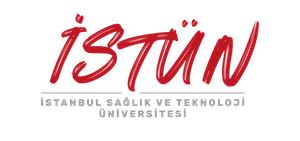| Hafta |
Konu |
Ön Hazırlık |
| 1) |
Sağlıkla ilgili temel kavramlar-1 |
Blackboard yüklü ders notları |
| 2) |
Sağlıkla ilgili temel kavramlar-2 |
Blackboard yüklü ders notları |
| 3) |
Dolaşım sistemi ve Hastalıkları |
Blackboard yüklü ders notları |
| 4) |
Solunum Sistemi ve hastalıkları |
Blackboard yüklü ders notları |
| 5) |
Gastrointestinal sistem ve hastalıkları |
Blackboard yüklü ders notları |
| 6) |
Üriner sistem ve hastalıkları |
Blackboard yüklü ders notları |
| 7) |
Endokrin sistem ve Hastalıkları |
Blackboard yüklü ders notları |
| 8) |
Sinir sistemi ve hastalıkları
|
Blackboard yüklü ders notları |
| 9) |
Kas iskelet sistemi ve Hastalıkları |
Blackboard yüklü ders notları |
| 10) |
Hemapoetik sistem ve Hastalıkları |
Blackboard yüklü ders notları |
| 11) |
Kulak burun boğaz ve göz hastalıkları |
Blackboard yüklü ders notları |
| 12) |
İnfeksiyon Hastalıkları |
Blackboard yüklü ders notları |
| 13) |
Kanser |
Blackboard yüklü ders notları |
| 14) |
Genel tekrar |
Blackboard yüklü ders notları |
| |
Dersin Program Kazanımlarına Etkisi |
Katkı Payı |
| 1) |
To be able to use imaging-related tools and devices within the scope
of the radiology, nuclear medicine and radiotherapy units in health
institutions, accompanied by a doctor or alone at the basic proficiency
level |
|
| 2) |
To be able to identify problems and take the necessary precautions
using the basic safety, maintenance and malfunction information
about the medical imaging devices |
1 |
| 3) |
To be able to make the necessary examination by minimizing the
risks related to radiation and radioactivity used in imaging. |
|
| 4) |
The ability to use imaging methods in accordance with their
indications and to consider the benefit/harm balance |
|
| 5) |
To be able to make anatomical-pathological correlations in imaging
with basic physiology anatomy and diseases knowledge and to guide
other colleagues in choosing the appropriate modality |
3 |
| 6) |
To be able to explain the use of contrast material in imaging, to
recognize the effects and side effects of contrast agents, to take
necessary precautions |
|
| 7) |
To be able to apply the rules related to radiation safety and radiation
protection in accordance with the legislation, to make the necessary
warnings and to take precautions |
|
| 8) |
To be able to explain the basic physics rules, mechanisms of action
and possible side effects of medical imaging devices |
3 |
| 9) |
Being able to follow, research and apply method changes and
technological developments related to the field. |
|
| 10) |
To be able to establish healthy relations with patients, their relatives
and other units/unit staff in the health sciences where they will serve
as intermediate staff |
3 |
| 11) |
To be able to define and effectively use medical and radiological
terminology in the field of health sciences. |
2 |
| 12) |
To be able to communicate in English at a basic level |
|
| 13) |
Ability to respect patient rights, privacy and confidentiality |
3 |
| 14) |
To be able to perform basic first aid applications until the support of the health team in emergency situations where first aid is required. |
|
| 15) |
Being aware of their responsibilities and asking for help in necessary
situations |
3 |
 İstanbul Sağlık ve Teknoloji Üniversitesi
İstanbul Sağlık ve Teknoloji Üniversitesi